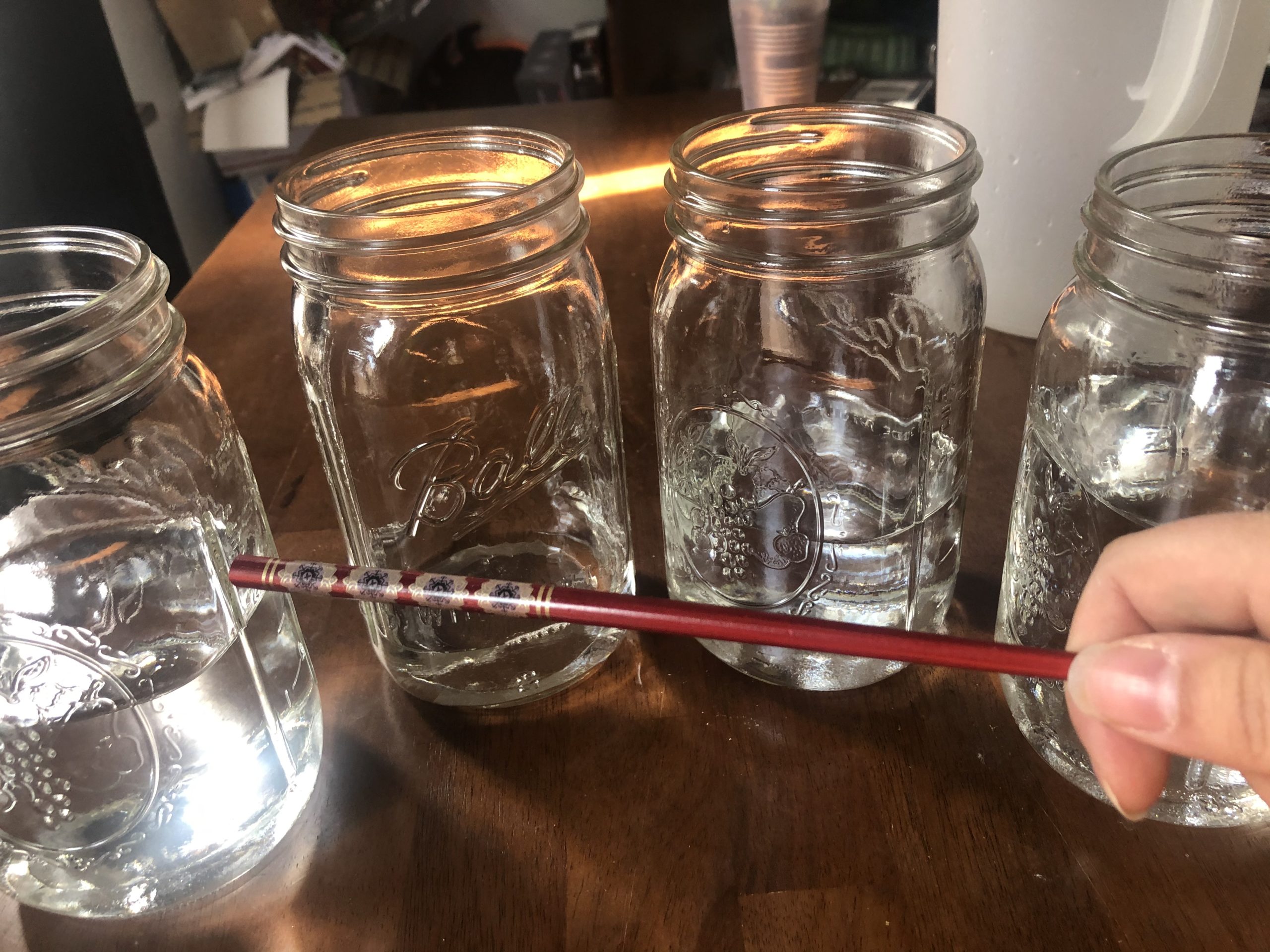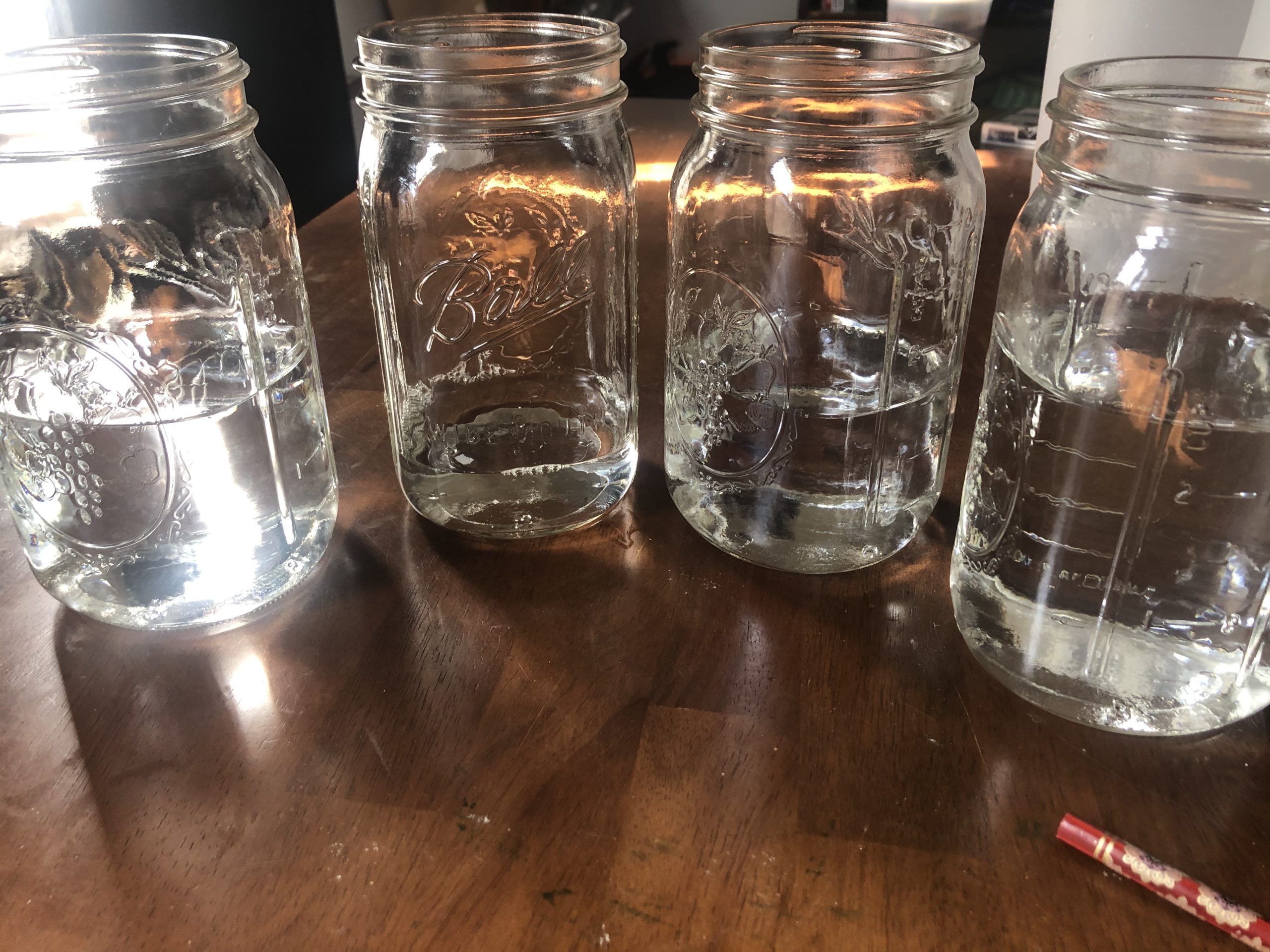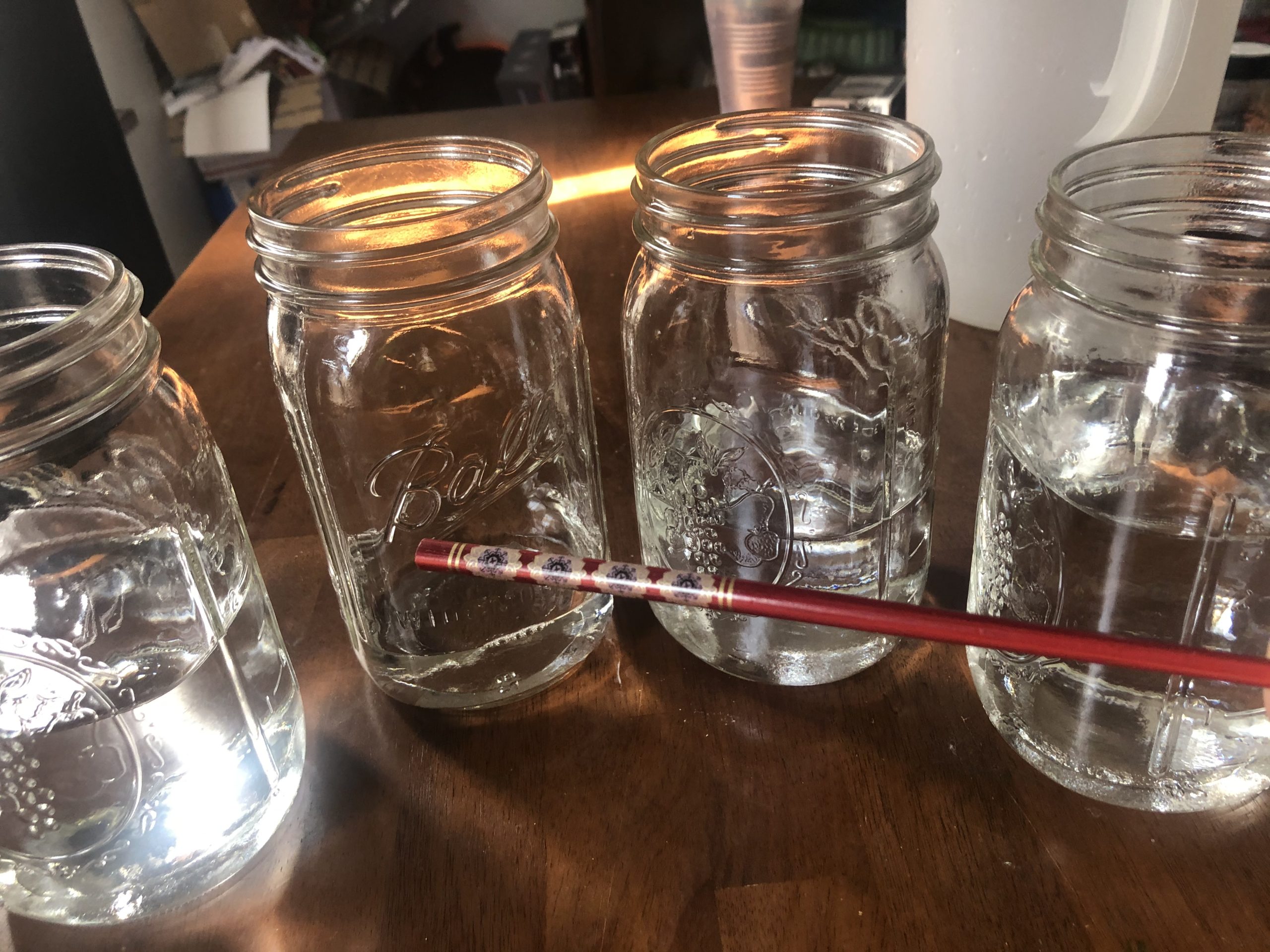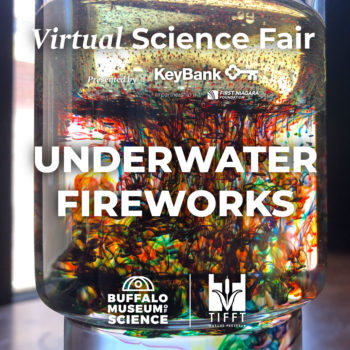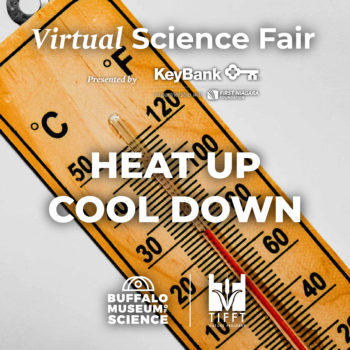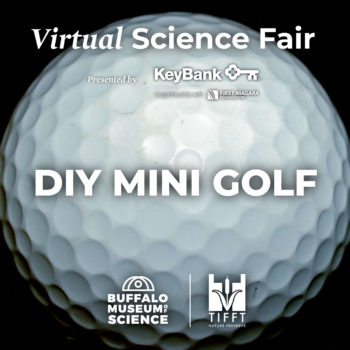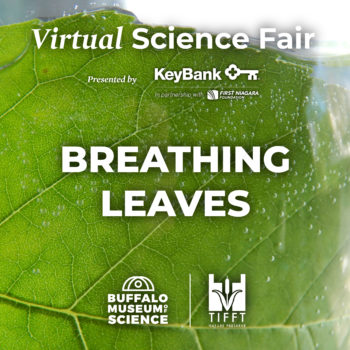Water Music

Have science fun as a family! Complete activities with parental supervision.
Materials:
- Glass jars or cups—if possible, they should all be identical
- Water
- Something plastic or wood that can be used as a drumstick (pencil, pen, plastic spoon, chopstick, etc)
Procedure
- Line up the jars. Gently tap the side of each jar with the “drumstick”. Do they sound the same or different?
- Add different amounts of water to each jar.
- Now, gently strike the jars again.
- Listen! Do they all sound the same? Which jar is the highest pitch? Which is the lowest?
- How does water affect the sound? Add or take out some of the water and experiment with different sounds.
- Be sure to take a picture or video to share in the Facebook comments on the Buffalo Museum of Science or Tifft Nature Preserve pages!
What’s it all about?
Sound is created through vibrations. These vibrations create waves that travel through the air until they reach and are absorbed by your ear. Our brain interprets these
vibrations as different pitches.
Pitch is a measurement of how high or low a note is. It is caused by frequency—how often the sound waves repeat themselves. Frequency and pitch are measured in a unit called hertz; a squeaky, high pitch sound has more hertz than a deep, low pitch sound.
In this experiment, the vibration occurs when you tap on the glass. When there is just air in the glass, they should sound nearly the same. However, when you add water, the vibrations have to go through that water as well, so when the vibrations get to your ear, they sound different!
Try It!
- We suggest using glass, but what about other kinds of cups? How does the sound of plastic or ceramic glasses differ?
- Pick a note and try to match it! Experiment and adjust the water in the glass to match your note.
- Take this to the ultimate level! Pick a simple song and try to recreate it! Adjust the water levels in each glass to match the notes in the song. You may need more cups for this. For example, “Twinkle Twinkle Little Star” would need at least 6 cups!
- Sound is caused by vibrations. If you have any musical instruments in your house, try them out! Can you see or feel any vibration?
